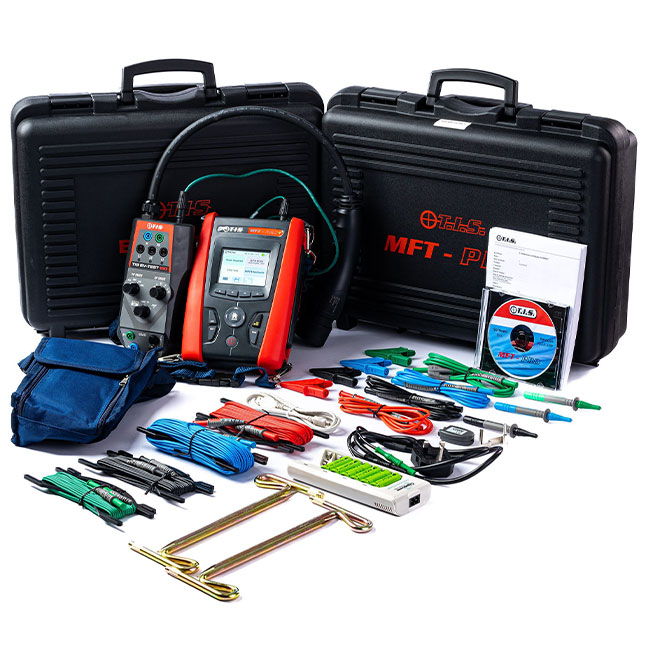A ground resistance tester determines how effective the grounding system of an electrical circuit is, with regards to its resistance. But before we explain how a ground resistance tester works with an EVSE system, let’s understand exactly what ground resistance is.
What is ground resistance?
Grounding, or earthing, is the intentional connecting to ground of a circuit conductor using a grounding electrode. This is a necessary safety feature of any electrical circuit, in order to divert fault currents which may occur in a circuit, to ground and to safety, otherwise they would follow an intended path and cause safety risks and damage.
The resistance of an object, in electrical terms, is the measure of opposition to current flow that object presents in a circuit. So electrical resistance is a force which counteracts the flow of current. Resistance is measured in Ohms. Ground resistance therefore is the measure of resistance between the grounding electrode in an electrical circuit and the ground itself. We want the grounding resistance to be zero, or as close to zero as possible within acceptable testing criteria, to confirm to us that any potential fault currents will flow freely to ground and safety.
When would we use the ground resistance test with EVSE?
With EVSE this means we would use ground resistance testing upon installation and during periodic safety testing and maintenance, to check that the earth grounding of the EVSE is adequate. It is possible for ground resistance to increase over time without us knowing. Earth rods can be eaten away and can corrode, and this is particularly the case with EVSE because it is used regularly and is stored outside open to the elements. This means that the grounding rods can deteriorate in performance and ground resistance in the system can increase, in some cases to dangerous levels, and certainly, if we don’t periodically test this a significant safety hazard can arise, as there is no way of knowing the grounding resistance through a visible inspection.
If we don’t carry out ground resistance tests, the user is potentially exposed to electrical shocks when using the EVSE, and the EVSE itself can become damaged. So the ground resistance test allows us to:
- Prevent risk of electric shock
- Avoid damage to devices or equipment
- Avoid errors and distortion in performance
- Avoid power factor problems
Carrying out a ground resistance test on EVSE
EVSE works by sending an electrical charge to an electric vehicle via a charging cable. This charge is used to return power to a battery in order to operate the electric vehicle. Like any other type of electrical circuit fault currents can occur and need to be diverted to ground. So part of the EVSE installation process is fitting the grounding electrodes.
For this ground resistance test you can use the MFT-PRO + supplied by Test Instrument Solutions. This is a multi-function tester with EVSE testing capabilities. Furthermore, this model of the MFT-PRO includes a grounding/earth resistance test in its EVSE auto sequence.
The ground resistance test works by the testing instrument generating an electrical current, which is supplied to the measuring electrodes to mimic the fault currents. The potential difference between the two electrodes is then measured to give us a reading of the ground’s resistance at that point. So with the EVSE we need to:
- Switch power off to the EVSE and isolate
- Set-up the MFT-Pro +, connecting it to the EVSE and finding the ground/earth resistance test functionality on the menu
- Make sure the grounding electrodes are grounded
- A voltage drop should occur because of the low resistivity in the earth
- The electrodes produce a current and the ground resistance measurement at that point can be read.
Please note that this section is for information purposes only. Anyone using equipment referred to in this section must be suitably qualified and/or experienced within the respective field. If in doubt before use, please consult a qualified electrician or engineer & thoroughly read all instruction booklets.